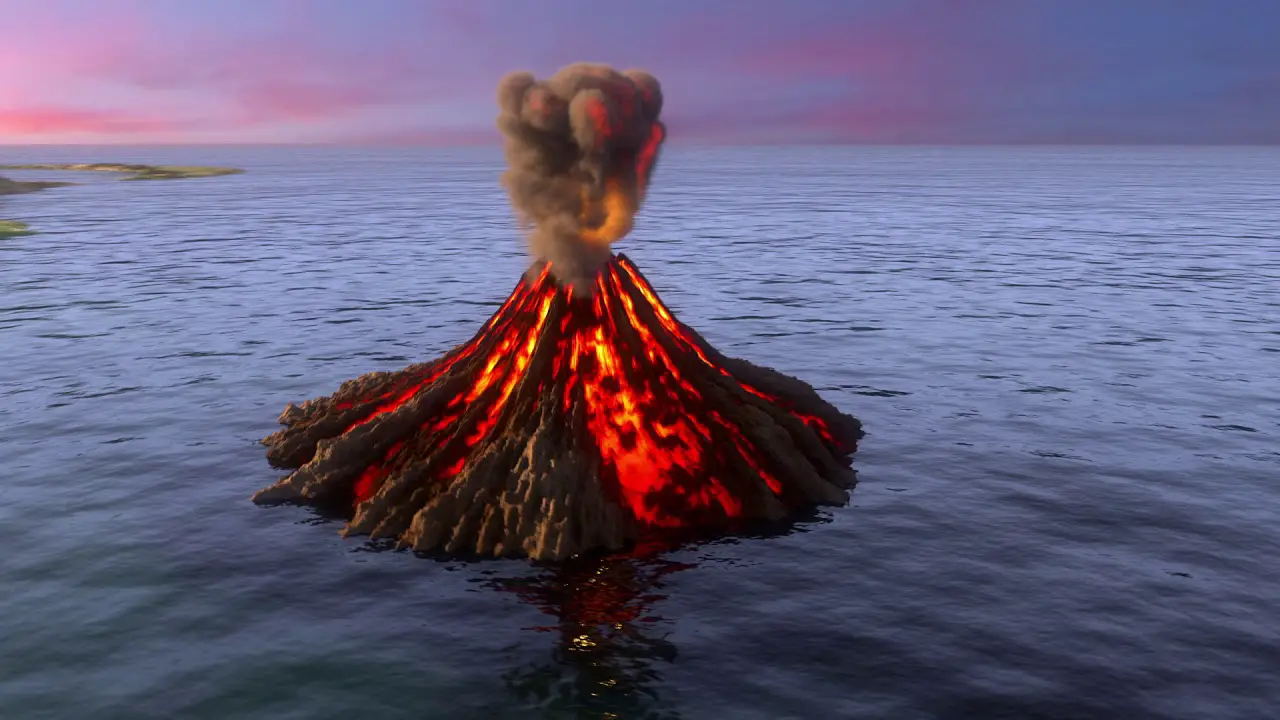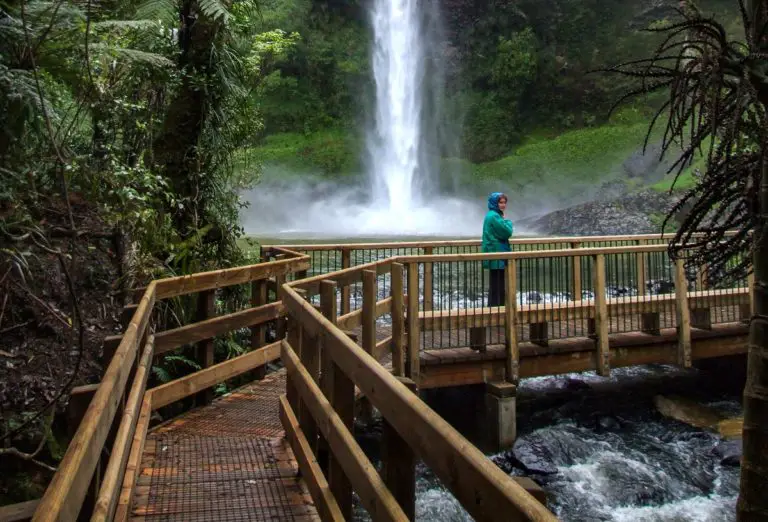New Zealand is home to some of the most spectacular and awe-inspiring volcanic formations in the world. From the lush greenery of the North Island to the snow-capped peaks of the South Island, New Zealand’s volcanoes are a sight to behold. In this blog post, we will be uncovering the fiery world of New Zealand’s volcanoes, exploring their geology, history, and unique characteristics.
So, if you’re looking to learn more about the volcanoes of New Zealand, read on!
The Ring of Fire: Understanding New Zealand’s Volcanic Activity
New Zealand is located on the Pacific Ring of Fire, a region characterized by intense seismic and volcanic activity. This geologically active area is home to approximately 75% of the world’s active volcanoes and is responsible for numerous earthquakes and volcanic eruptions each year. The Pacific Ring of Fire is a result of the tectonic plates beneath the Earth’s surface colliding and interacting, creating a volatile environment for volcanic activity.
New Zealand’s position on the Ring of Fire means that it experiences regular volcanic eruptions, with some occurring as recently as the 21st century. The country’s volcanoes are mainly situated in the North Island and are a significant attraction for tourists and scientists alike.
The volcanic activity in New Zealand is closely monitored by geological experts who use seismographs and other instruments to track any signs of potential eruptions. This monitoring helps to ensure the safety of both the local population and visitors to the region.
Understanding the Ring of Fire and its impact on New Zealand’s volcanic activity is crucial for anyone seeking to explore the country’s awe-inspiring volcanic landscapes. It allows us to appreciate the power and beauty of these natural phenomena while also respecting the potential risks they pose.
Mount Ruapehu: A Sleeping Giant Waiting to Erupt
Mount Ruapehu, located in the North Island of New Zealand, is one of the country’s most famous and active volcanoes. With its snow-capped peak, pristine alpine slopes, and stunning crater lake, it attracts both avid skiers and adventure seekers. But beneath its picturesque beauty lies a sleeping giant, capable of unleashing catastrophic eruptions.
Mount Ruapehu last erupted in 2007, but its history is filled with violent and destructive eruptions. In 1953, a lahar (a volcanic mudflow) swept down the slopes, causing the tragic loss of life and significant damage to nearby infrastructure. This event serves as a reminder of the potential dangers associated with this volcano.
Despite its potential for eruption, Mount Ruapehu is closely monitored by scientists who utilize advanced technology to detect any signs of activity. Seismic instruments, gas measurements, and ground deformation monitoring help to provide early warning of volcanic unrest, allowing authorities to take appropriate actions and ensure the safety of residents and visitors.
While Mount Ruapehu’s sleeping giant status may give cause for caution, it also offers an opportunity to witness the raw power of nature in action. Visitors can explore its stunning landscape, ski down its slopes, or hike its trails, always with the awareness that beneath their feet, the volcano’s fiery nature waits patiently for its next awakening.
White Island: Exploring the World’s Most Active Volcanic Crater
White Island, also known as Whakaari, is a truly unique and captivating destination for adventurers and nature enthusiasts alike. Located off the coast of New Zealand’s North Island, it is an active volcanic island that offers a rare opportunity to explore the world’s most active volcanic crater.
What makes White Island so special is its constant state of activity. With its billowing steam vents, roaring fumaroles, and vibrant hues of sulfuric yellow and white, the island presents a surreal and otherworldly landscape. Visitors can take guided tours to the island, walking along the moon-like surface, and experiencing firsthand the raw power of the Earth’s geothermal energy.
However, it is essential to note that White Island’s active status also comes with inherent risks. The volcanic activity on the island can be unpredictable, and visitors must adhere to strict safety guidelines. Expert guides ensure the utmost precaution and provide protective gear, including gas masks, to safeguard against potential volcanic hazards.
Exploring White Island is an exhilarating adventure that offers a glimpse into the forces that shape our planet. It serves as a reminder of the dynamic and ever-changing nature of our world, and the need to respect and admire these awe-inspiring natural wonders.
Tongariro National Park: Home to Three Beautiful Volcanoes
Tongariro National Park, located in the central North Island of New Zealand, is a breathtaking landscape defined by its three magnificent volcanoes: Mount Tongariro, Mount Ngauruhoe, and Mount Ruapehu. This UNESCO World Heritage site is not only a geological wonder but also a cultural and spiritual landmark for the indigenous Māori people.
Mount Tongariro, the largest of the three volcanoes, boasts a diverse range of ecosystems, from barren desert-like landscapes to lush forests. Its striking volcanic cones and vibrant-colored lakes create a mesmerizing backdrop for hikers and nature enthusiasts. The nearby Mount Ngauruhoe, often referred to as “Mount Doom” from the Lord of the Rings films, is an iconic symmetrical cone that attracts climbers seeking a challenge.
But perhaps the most famous of the three is Mount Ruapehu, with its stunning ski slopes, dramatic crater lake, and frequent volcanic activity. This active volcano offers visitors the unique opportunity to witness nature’s power and beauty firsthand.
Tongariro National Park is not just a playground for adventurers; it is also a place of great cultural significance. The mountains hold deep spiritual and ancestral connections for the Māori people, and visitors can learn about their rich history and traditions through guided tours and cultural experiences.
Whether you’re seeking adventure, natural beauty, or cultural immersion, Tongariro National Park and its three beautiful volcanoes are an absolute must-visit destination in New Zealand.
The Taupo Volcanic Zone: Uncovering the Heart of New Zealand’s Volcanic Landscape
The Taupo Volcanic Zone is a geologically active area in the North Island of New Zealand that is home to some of the most impressive and influential volcanoes in the country. Stretching approximately 350 kilometers, this zone is characterized by a complex and dynamic volcanic landscape that has shaped the region’s natural beauty and cultural heritage.
At the heart of the Taupo Volcanic Zone lies Lake Taupo, a vast body of water that was formed by a massive volcanic eruption over 26,000 years ago. This eruption, known as the Oruanui eruption, was one of the most powerful eruptions in recorded history and left a lasting impact on the landscape.
Surrounding Lake Taupo are numerous volcanoes, each with its own unique characteristics and history. The most prominent of these is Mount Tongariro, a volcanic complex that includes three main peaks – Tongariro, Ngauruhoe, and Ruapehu. These volcanoes have played a significant role in shaping the surrounding terrain and have provided inspiration for both indigenous Māori mythology and modern tourism.
The Taupo Volcanic Zone is not only a geologist’s paradise but also a haven for outdoor enthusiasts. Hiking, skiing, and exploring the diverse ecosystems are popular activities in this area. Visitors can witness the vibrant colored lakes, steaming vents, and dramatic volcanic landscapes that make the Taupo Volcanic Zone a must-see destination in New Zealand.
As with any volcanic region, there are inherent risks associated with the Taupo Volcanic Zone. Monitoring and research by scientists help to better understand the potential hazards and provide early warnings to mitigate risks. This allows visitors and residents to safely explore and appreciate the breathtaking beauty of this geologically dynamic landscape.
Mitigating Risks: How New Zealand is Prepared for Volcanic Activity
New Zealand has a well-established system in place to mitigate the risks associated with volcanic activity. The country’s geological experts and scientists play a crucial role in monitoring volcanic activity and providing early warnings to ensure the safety of both the local population and visitors.
Advanced technology, such as seismographs, gas measurements, and ground deformation monitoring, allows scientists to detect any signs of volcanic unrest and take appropriate actions.
In addition to monitoring, New Zealand has a robust emergency management framework in place. Local authorities work closely with the scientific community to develop and implement emergency response plans that outline evacuation procedures, communication strategies, and the distribution of resources. These plans are regularly reviewed and updated to reflect the latest scientific knowledge and understanding of volcanic behavior.
Public education and awareness campaigns are also key components of New Zealand’s approach to mitigating volcanic risks. The government provides information to the public on how to prepare for and respond to volcanic emergencies, including the importance of having emergency kits, creating evacuation plans, and staying informed through official channels.
By prioritizing monitoring, emergency preparedness, and public education, New Zealand demonstrates its commitment to ensuring the safety and well-being of those living in or visiting volcanic areas. The proactive and comprehensive approach to mitigating volcanic risks is essential for fostering a sense of resilience and preparedness within communities.



